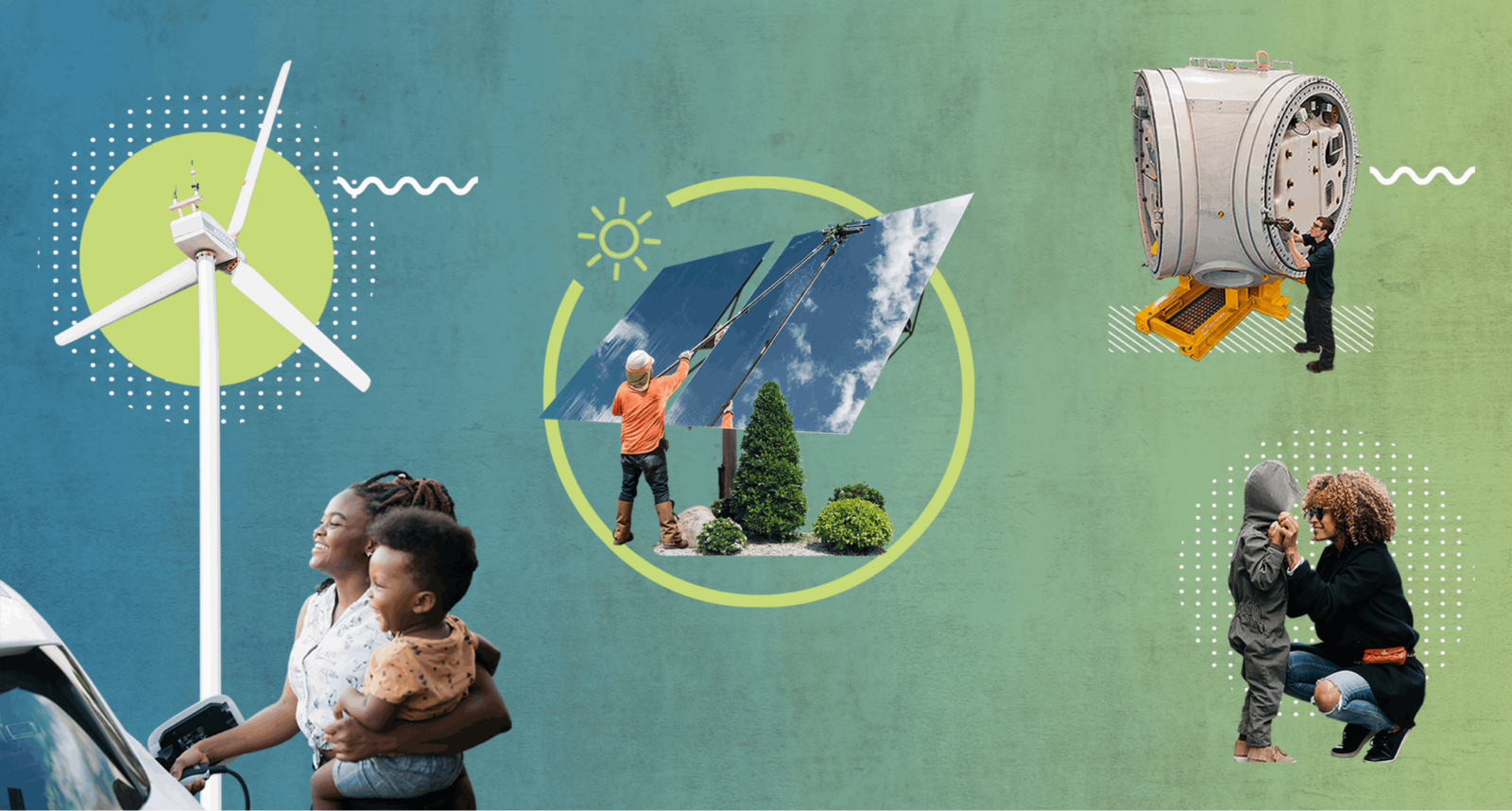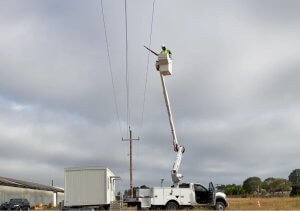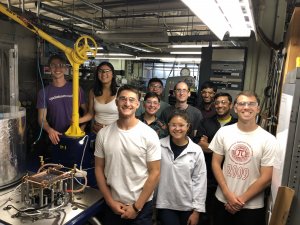
Social Impact and Energy Equity
Each CalSEED awardee is carefully selected based upon their innovations ability to improve both social impact and energy equity for Californians.
The California Sustainable Energy Entrepreneur Development Initiative (CalSEED) is an early-stage grant funding and professional development program that funds and accelerates technological innovations that have the potential to meaningfully advance a just clean energy transition. CalSEED envisions an equitable clean energy economy that advances affordability and resilience while increasing access to economic opportunities for all communities in California, especially those most disproportionately affected by pollution, poverty, and climate change. CalSEED seeks to support innovators and entrepreneurs from diverse socio-economic and geographic backgrounds in California working to bring clean energy concepts to market that advance energy equity.
Social Impact
Social impact is defined as the economic and environmental benefits of transitioning to clean energy. To be selected for a CalSEED award applicants must be able to identify how, when scaled, the proposed technology positively benefits all California electricity ratepayers through one of the 5 categories defined by the California Energy Commission’s Electric Program Investment Charge program:
- Expand the use of renewable energy
- Build a safe and resilient electricity system.
- Advance electric technologies for buildings, businesses, and transportation
- Enable a more decentralized electric grid
- Improve the affordability, health, and comfort of California’s communities
- Support California’s local economies and businesses.
CalSEED understands that many early-stage innovations will not deliver meaningful ratepayer benefits in the immediate future, therefore it is vitally important to include a discussion of the potential long-term impacts of your proposed technology.
Our Impact
In funding for Women led startups
Awarded to Projects in Disadvantaged Communities in California
Companies with women and/or minorities in C-suite positions
Ratepayer Benefits
Below are three CalSEED companies that demonstrate ratepayer benefits in grid reliability, grid safety, and reduced electricity costs:
Grid Reliability 
- Gridware is a wildfire prevention technology company that has developed a real-time grid monitoring system of sensors that can monitor poles, conductors and equipment on the electricity distribution grid to predict where they may fail and ignite a wildfire. They are able to increase grid reliability by reducing the total duration of interruptions and outage restoration time. Examples of Gridware’s ratepayer benefit include:
- At 10% market adoption, Gridware projected a reduction in System Average Interruption Duration Index (SAIDI) caused by Gridware Technology deployment to be 16 minutes per year
- Reduction in Customer Average Interruption Duration Index (CAIDI) caused by Gridware Technology deployment to be 11 minutes per year.
- Commercialization timeline of 1-2 years, the team projects $560M in avoided economic damage annually.
Grid Safety 
- Antora Energy is increasing grid safety with their innovative high-efficiency thermal-to-electricity converters based on solar cells that will enable ultra-low-cost electricity storage and low-cost, high efficiency industrial waste heat recovery. Examples of Antora Energy’s ratepayer benefit include:
- Commercialization timeline for their technology is ~3 years and after 10% market adoption, the team projects an energy savings of 470 GWh per year.
- Technology could displace the need for traditional “peaker” plants and result in peak power reduction of 1.2M kW per year, and the Operations & Maintenance savings typical of the gas plants this system would replace is projected to be $35M per year (also after 10% market adoption).
Reducing Electricity Costs
- Stasis Group is developing a Stasis Thermal Energy Storage System that uses phase change materials to keep buildings cool without using air conditioning during late-in-the-day high peak demand charge periods that occur along with expensive peak pricing, ultimately reducing electricity costs. Examples of Stasis Group’s ratepayer benefits include:
- During the CalSEED Concept Award, Stasis Group built and tested a prototype of the system, advancing this technology from a TRL of 2 to 6.
- At a 1% market adoption, the team projects this system will save CA rate-payers 26,400 kW per year, more than 4,000,000 kWh per year and will save almost $7 million in demand charges annually.
Energy Equity
CalSEED defines energy equity as prioritizing technological solutions that provide affordable access to energy, greater economic opportunities, and enhanced resilience to California’s disadvantaged and low-income communities, which face the highest energy and socio-economic burdens. Disadvantaged communities are defined using the CalEnviroScreen, a mapping tool that helps identify California communities that are most affected by pollution and poor socio-economic conditions. The CalSEED program is committed to building energy equity into the foundation of how grant awardees conceive their clean energy ideas, design their products and run their companies. CalSEED provides training and guidance to awardees on setting and achieving goals that advance energy equity through technological innovation and intentional business practices.
Equity-In, Equity-Out Framework
Equity in: Attracting a diverse pool of applicants into CalSEED
We actively seek diverse innovators across California to fully participate in the development and implementation of clean energy solutions. We do this through inclusive outreach to encourage applicants from early-stage businesses and communities that are underrepresented in the climate tech industry and who may be disproportionately impacted by climate change, pollution, and poverty. This includes applicants who are women, low-income, Black, Indigenous, and People of Color (BIPOC), Lesbian, Gay, Bisexual, Transgender, Queer, Asexual, Intersex (LGBTQAI+), rural residents, and veterans. We also drive equity into our programs by having:
- An impartial selection process
- Social impact and energy equity award selection criteria
- Balanced award distribution throughout the state to ensure geographic diversity
Equity-out: Encouraging equitable energy solutions out to communities
Disadvantaged communities as defined by CalEnviroScreen need clean energy investments that create healthier environments and reduce the cost of basic necessities. CalSEED encourages entrepreneurs to develop equitable and replicable energy solutions that positively impact our most vulnerable populations. We support and coach entrepreneurs to bring equitable and innovative ideas out to communities by working with them to:
- Develop innovations that can improve environmental, health, and economic conditions in disadvantaged communities at scale
- Integrate diversity, equity, and inclusion best practices into their growing companies and teams
- Encourage early-on relationship-building and partnership with community-based organizations and inclusive businesses.
Examples of Our Equity-Out Strategy Include:
Examples of technological solutions that lead with equity in California’s disadvantaged communities are:
- Produce innovations that provide direct cost savings or clean energy access for consumers in DACs
- Improve health outcomes such as reduced air pollution and heat-related illnesses DACs
- Create jobs and economic opportunities in DACs by hiring and training from communities most affected by climate change, and individuals who are underrepresented in the clean energy industry such as women, Black, Indigenous, and People of Color (BIPOC), Lesbian, Gay, Bisexual, Transgender, Queer, Intersex, Asexual (LGBTQIA+), residents of rural areas, and veterans
- Include meaningful community involvement and outreach from DACs throughout the development of the innovation through actions such as including community members on advisory boards, planning to increase cap table representation for underrepresented groups, developing respectful partnerships with community based organizations, and/or creating opportunities to pilot technologies in ways that deliver long-term benefits for residents of communities most affected by poor environmental and economic conditions
- Create business plans that facilitate community-owned and operated clean energy projects in DACs where possible
The following CalSEED companies are exemplifying energy equity with their innovations:
Nativus
- Nativus has developed a hyper efficient, easy-to-install, lightweight air conditioning unit that has the potential to decrease power consumption by 67% compared to current air conditioning (AC) units – lowering ratepayers utility bills and dramatically lowering CO2 emissions. As global temperatures rise, it is predicted that over the next 30 years 2.5B AC units will be purchased. Because the unit is lightweight and easy to install, Nativus’ innovation will be easier for the elderly, renters and disabled populations to use, increasing access to clean energy technologies within demographics that need affordable energy and air conditioning the most.
Horizon PV
- Horizon PV is developing a thin film solar cell, which is semi-transparent, flexible, and can be laminated to glass surfaces or on walls, capable of generating clean renewable electricity from solar windows in buildings and vehicles. Traditional silicon PVs have high initial upfront and installation costs and require a large flat area (typically a building or household rooftop) to be installed in. Horizon’s semi-transparent organic photovoltaic films have relatively inexpensive installation costs and are directly integrated onto any window, which is typically available in every household regardless of income status.
Community Energy Labs
- Community Energy Labs is deploying a low-cost grid-interactive building control platform that can autonomously and flexibly manage energy and shape electricity demand for K-12, municipal and small to mid-sized buildings. The Dynamic Model Predictive Control has reduced setup time and less amount of training data needed to accurately instantiate a model-based controller for load shaping and management. This will reduce costs and increases accuracy for for California’s 1,037 school districts and 482 municipalities to handle increasingly complex commercial energy tariffs, performance standards, air quality and resiliency goals.
Electric Fish
- Electric Fish is developing a DC microgrid which can accommodate agnostic Electric Vehicle (EV) charging for current and future-ready voltage architectures with a minimal grid connection. There is a siting intelligence tool (CoReScore) which ingests disparate data inputs such as income demographic indicators, grid hosting capacity, EV traffic flow, and climate event risk. CoReScore informs us of the best locations to co-locate energy storage to serve community resilience needs, such as EV charging and/or grid backup energy. Using CoReScore will guide future deployments of our innovation in disadvantaged communities to foster equitable development of resilient energy infrastructure. Other features of the innovation allow for participation of small businesses in EV charging in disadvantaged communities and increased access to resilient resources for disadvantaged communities, including system recovery, especially in vulnerable communities.

Awardee Directory
Explore the 150 entrepreneurs from around California that the CalSEED program has supported.
Know before you apply
If CalSEED funding seems right for you, check out the contractual terms and conditions. Reading them is not only in your best interest but will provide you with important information on what is required of you by signing this contract. Seriously, go read it. Don’t apply before reading!
Sign up for our mailing list to get important updates and information about the application process.

